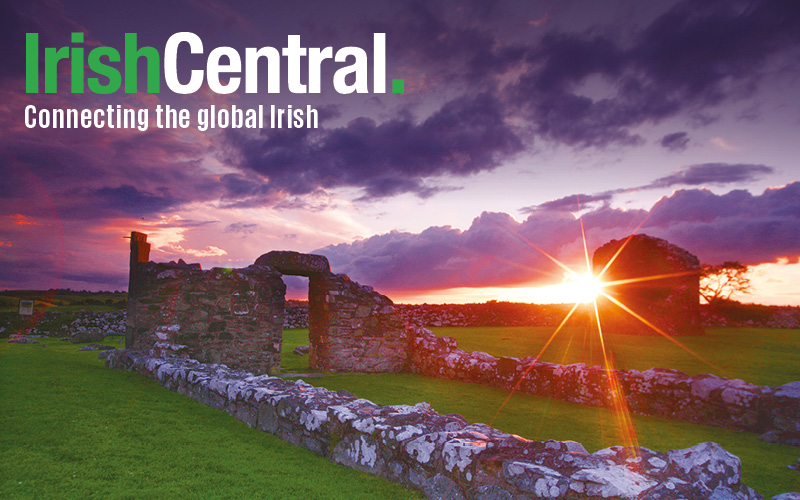Irish Montrealers are pushing to establish a new memorial to commemorate the 6,000 Irish who died of typhus in the area in the post-famine years.
The mass grave containing the Irish victims is humbly marked by a black stone set in an industrialized space at the base of Victoria bridge. This simple marker sits above he largest single burial site of the Great Hunger in the world outside of Ireland itself.
The 10-foot tall, engraved stone currently marking the spot has been stained black by car fumes (and nicknamed the Black Rock) and, so, local Irish people established the Montreal Irish Memorial Park Foundation in 2012 with the aim of turning a nearby car park into an official memorial to the thousands of Irish buried here and the Canadians who helped them.
During the worst year of the Famine, thousands of Irish people fled to Canada, arriving at Grosse Île located on the St. Lawrence River about 50 miles east of Quebec City. The island served as a quarantine station for the Port of Quebec akin to Staten Island in New York.
Due to the lack of information on the symptoms of typhus, however, many sick people were considered healthy and allowed to continue on their journey to the next stop, Point St. Charles in Montreal.
Read more: Bravery of the Grey Nuns of Montreal during Great Famine honored
The city was not prepared for the number of sick and dying Irish people who arrived in what was to be one of the hottest summers on record. By the end of this “Calcutta summer,” 6,000 had lost their lives, including the Montreal mayor John Easton Mills, who contracted typhus and died in 1847 after visiting the fever sheds.
The location of the mass Irish grave was forgotten until construction work began on the Victoria Bridge in 1859. It was these workers who honored the Irish by erecting the Black Rock and every year since 1865 a ceremony led by the Ancient Order of Hibernians has seen a walk to the rock to remember the typhus victims.
The Memorial Park Foundation has set 2017, the 375th anniversary of Montreal, as the time by which they will establish the new memorial with plans to include a museum, monument, meditation areas, a GAA Irish sports field and a beautiful green space that would double as a stunning entryway to the city from the Victoria Bridge.
Winning the support of Montreal’s mayor Denis Coderre, who himself has Irish roots, the foundation have met with him several times and are hopeful that permission will soon be granted.
Victor Boyle, one of the directors of the Montreal Irish Memorial Park Foundation, says that the Irish people who survived contributed greatly not only to Montreal but to all of Canada. Approximately 40% of people in Quebec claim some degree of Irish heritage.
"All these decades later, and we're still having ceremonies here," Boyle told the Montreal Gazette.
"That shows we're never going to forget."
Read more: Ghosts of the Great Hunger Irish at Grosse Île, Canada
The park will also pay tribute to the many Canadians who contracted typhus while trying to help the Irish and those families who took in orphaned-children who lost their parents in a strange new country.
Fergus V. Keyes, also a director of the foundation, believes it is important to remember all the lives lost: “these 6,000 immigrants who died; to honor the many French-speaking Quebec families who adopted, and gave homes to more than 1,000 children who were orphaned by this tragedy; and to honor the many Montrealers who went out and gave aid to these poor immigrants and caught the fever and died themselves, including John Mills, who was mayor of Montreal at the time. But also a beautiful space inclusive for all Montrealers regardless of their heritage”
Great new song by Richard Murrin about the Montreal Black Rockhttps://t.co/bFMZpC6lgV
— Montreal Monument (@MtlMonument) February 21, 2015
H/T: Montreal Gazette




Comments